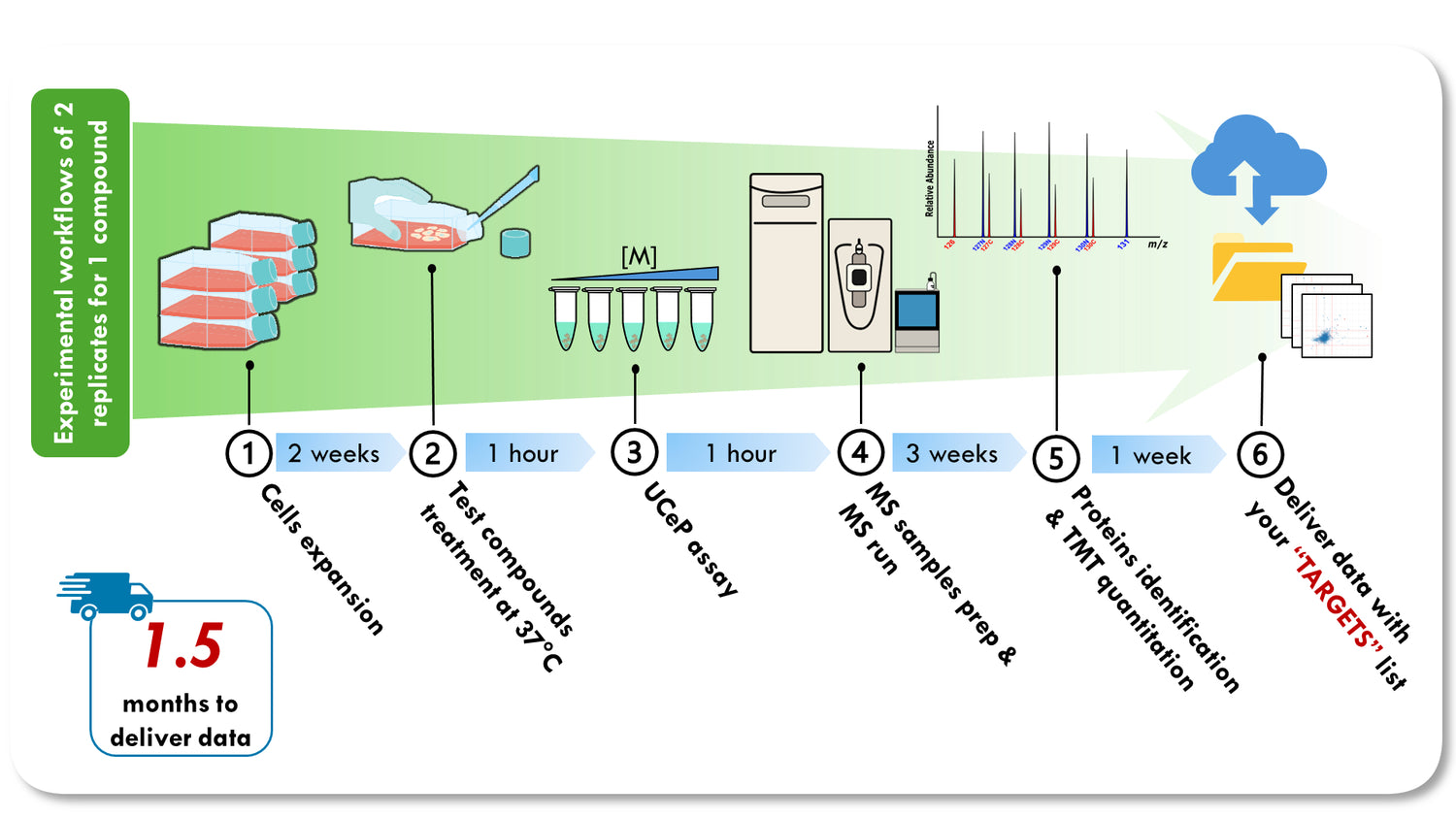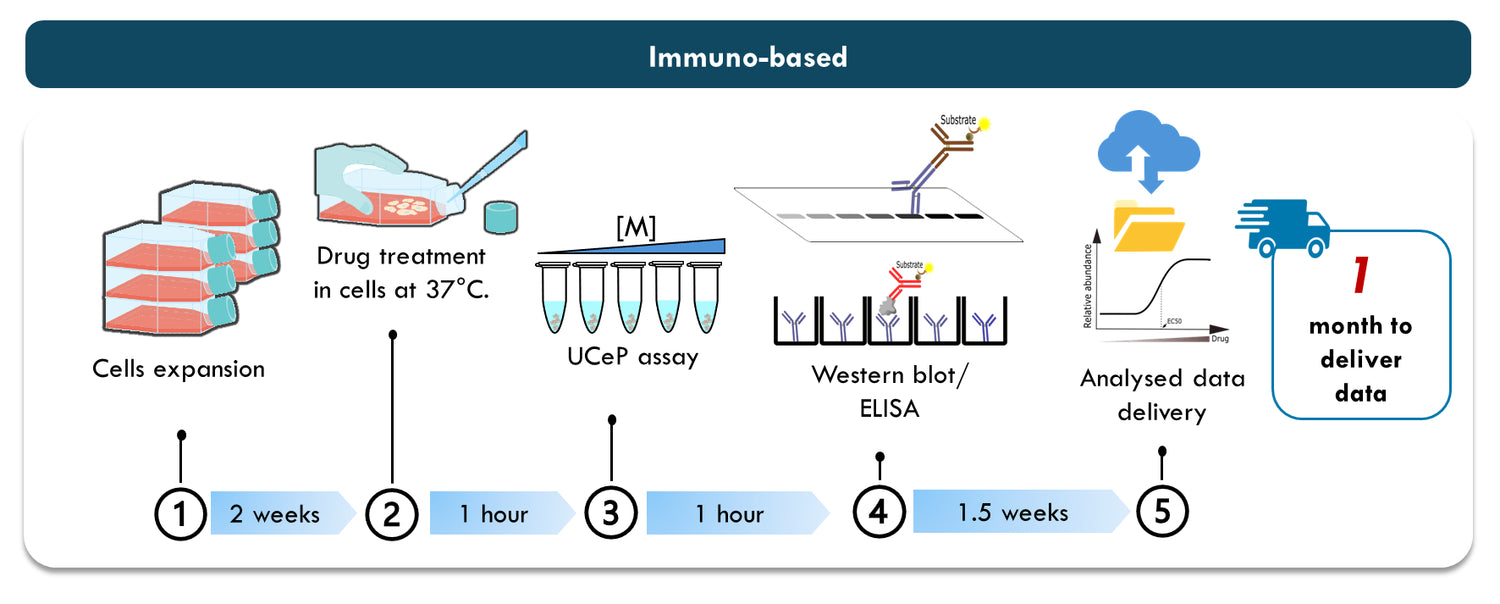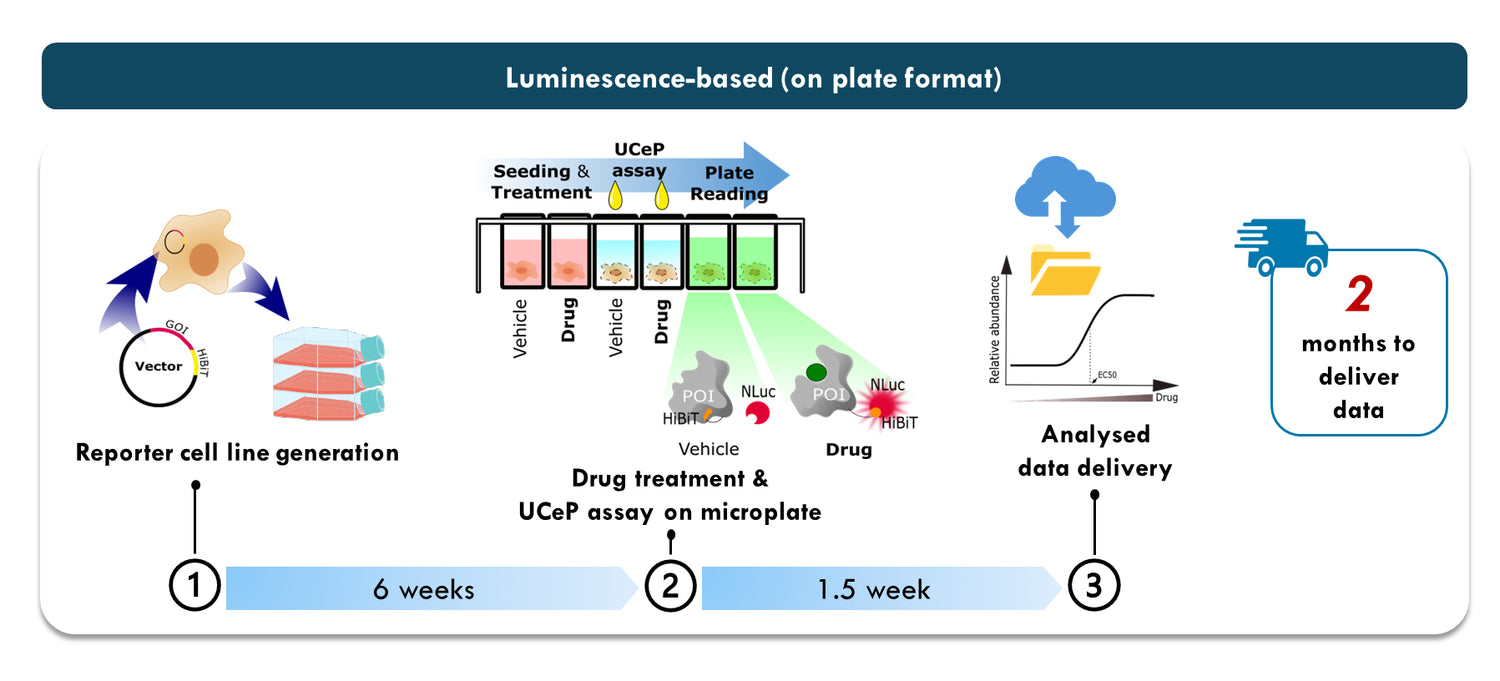UCeP-ID
our target deconvolution solution
"What is the major binding targets of my compound/drug?"
"How can I find it out quickly and genuinely from the highly complex proteome?"
"Does my compound engage other undesired targets that may lead to adverse effects in human body?"
Above are the vital questions to be addressed upon successful hits identification from a phenotypic screening. Any target misidentification and off-targets ignorance will eventually backfire your clinical trials results that easily cost billions of USD. Therefore, target identification is a critical and inevitable step for any drugmakers to invest for their future of success.
Nevertheless, target identification is always an uphill task, and the process complexity of old methods is intimidating many researchers. But now you can just engage our professional service to jump over this daunting process and get your data at your fingertips. Our current solution is coupling the UCeP technology to advanced mass spectrometry for target identification at proteome-wide level. This service is abbreviated as "UCeP-ID" in our services list. UCeP-ID enable us to scan through the entire proteome to find out the target proteins that undergo stability changes upon drug treatment. Moreover, UCeP-ID can unbiasedly survey entire protein targets regardless of their drug binding site's location, inhibitory mode, druggability, and the classes of drug molecules. As a result, you can build a more comprehensive list of targets (on/off) and rank those identified targets based on our scoring metrics.
Unlike traditional methods, no specific pre-assay preparations, such as genetic modifications, probe modifications, or antibodies production are required for UCeP-ID. This has tremendously shortened the entire assay time and deliver you the data faster than other approaches.
UCeP-ID highlights:
- Scan up to 7000+ human proteins.
- Unbiasedly scouting for the targets.
- No pre-assay preparations required like gene cloning and probe modifications.
- No disclosure of your drug structural information required.
- Data can be delivered as fast as in 1.5 months.
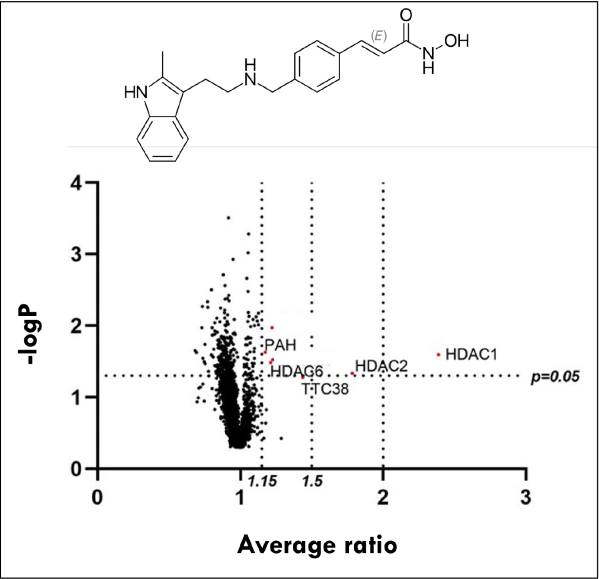
A successful case
Panobinostat an approved medication used to treat multiple myeloma, a type of blood cancer. It unselectively inhibits many histone deacetylases in cells, also known as pan-HDAC inhibitor. We run the UCeP-ID assay to unravel panobinostat targets. We successfully identified not only the major targets of HDAC1,2,6, but also other reported off-targets (eg. TTC38, PAH, etc) which could be further studied for its off-targets effects and toxicity.
UCeP-Engage
our target engagement / validation solutions
Our target engagement assay is a target centric approach to measure the stability changes of a particular target protein in cell. This service is abbreviated as "UCeP-Engage" in our services list. UCeP-engage is incredibly useful when you want to:
- Validate the putative targets of your drug.
- Determine cellular IC50 of your drug.
- Examine the cell permeability of your drug.
- Run a cell-based targeted high-throughput screening of a compound library.
- Perform SAR-based lead optimization.
- Study the effect of mutation(s) and PTMs on your target proteins.
- Other explorative studies on a specific target protein.
Immuno-based and luminescence-based detection systems are the two common settings being used for UCeP-engage in our laboratory. Luminescence-based UCeP-engage is suitable for high-throughput assay setup due to its sensitivity and no-washing steps required in the assay. However, it requires genetic manipulation of cell line to express a tagged ectopic protein for the activation of luciferase. In contrast, immuno-based UCeP-engage has lower throughput and requires tedious washing and incubation steps. Despite of it, if native and wild type proteins in the host cells are your utmost research interest, immuno-based UCeP-engage should be employed in your experiment.
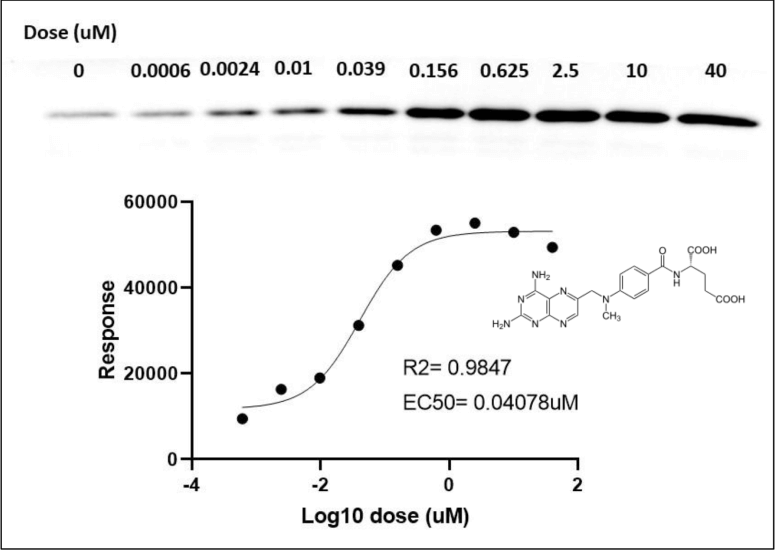
A successful case
Methotrexate a known anti-cancer drug inhibiting dihydrofolate hydrogenase (DHFR). We run the UCeP-engage assay in dose-response experiment with western blotting to validate its binding target. We successfully verified its target engagement with DHFR and showed its binding affinity of 40 nM in cell, close to the reported value.



